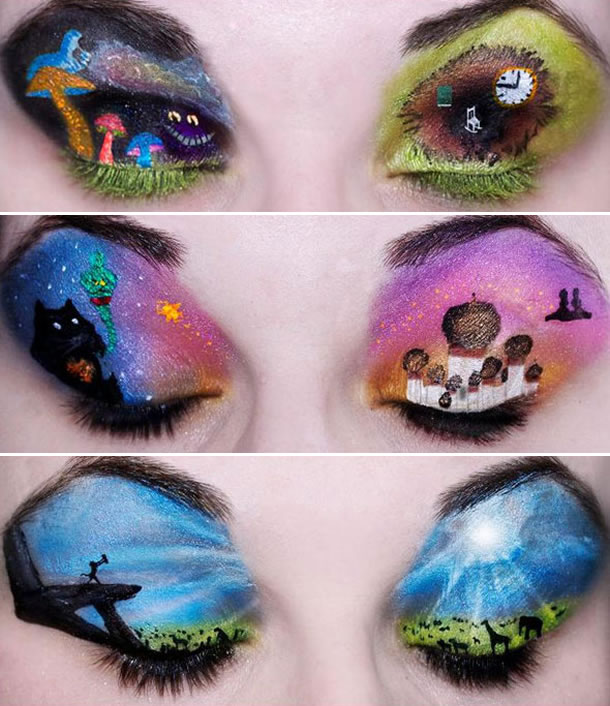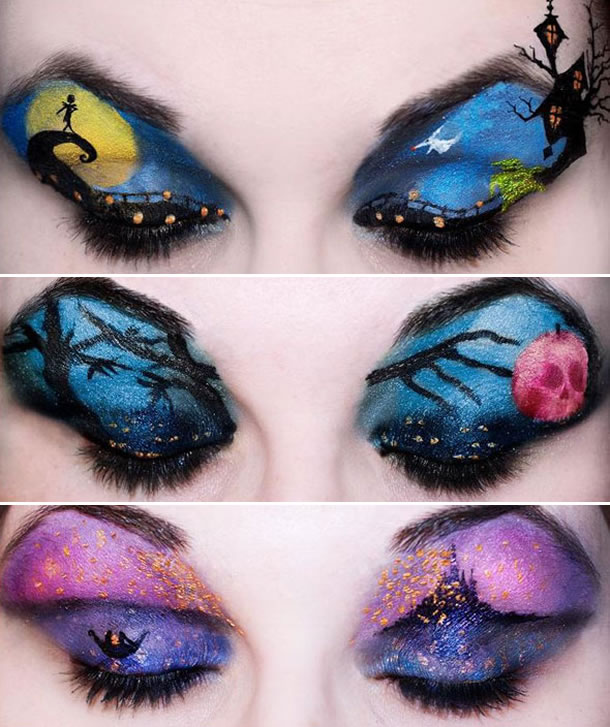Wednesday, September 25, 2013
The Creation of Flynn Rider
Disney v. Andersen
Despite The Little Mermaid's enormous popularity, the film has also received an incredible amount of criticism since its release in 1989. In her article, "The Little Mermaid," Roberta Trites argues that Disney's adaptation of Hans Christian Andersen's tale of the same name takes away the integrity of every female character, teaching women that they should always be dependent on men. While I agree that many of the original tales morals were altered to fit the Disney "formula," critics should recognize the necessity of these changes and the strengths of this movie rather than simply focusing on its faults.
For those of you who aren't familiar with Andersen's tale, here are some of the major changes Disney made in its adaptation. First of all, in the original tale, the sea witch is not looking for revenge. Therefore, Ariel seeks her out to transform into a human. Secondly, when Ariel is transformed into a human it is an incredibly painful process that makes her feel as though she is walking on knives for the rest of her life. In addition, Ariel doesn't get her happy ending. The prince marries another woman and Ariel dissolves into sea foam before becoming a daughter of the air where she then spends her afterlife attempting to gain an immortal soul through doing good deeds. Lastly, and probably the most important difference, merpeople do not have immortal souls in Andersen's tale. Although she is also motivated by love for the prince, part of Ariel's determination to marry the prince is to gain an immortal soul. However, in the Disney movie, all she wants is to marry the handsome prince.
So yes, Ariel's motives seem much more shallow in the Disney adaptation than they do in Andersen's tale. Let's face it though, Andersen's tale would not have made a great animated children's movie. If I were watching that movie when I were five years old, I would have been terrified and my parents would have been horrified that they had let me watch it. For the sake of marketability, Disney had to drastically alter the original tale and therefore some of the original morals. If they hadn't, The Little Mermaid would not have been nearly as successful and Disney would have lost a huge amount of money producing that movie. And although some may argue that Disney should have simply avoided adapting Andersen's tale at all, I believe that Disney would have been stupid to ignore this tale. Many people dream of what lies at the ocean floor. This makes the ocean the perfect setting for an animated movie, because the animators are free to create an entirely new world. Part of The Little Mermaid's genius is that it translated a human world into an unknown, seemingly magical setting. So although Disney drastically altered the values behind Andersen's tale, The Little Mermaid was still an incredible feat in the world of animated films and it should still be recognized for its strengths while being criticized for its weaknesses.
For those of you who aren't familiar with Andersen's tale, here are some of the major changes Disney made in its adaptation. First of all, in the original tale, the sea witch is not looking for revenge. Therefore, Ariel seeks her out to transform into a human. Secondly, when Ariel is transformed into a human it is an incredibly painful process that makes her feel as though she is walking on knives for the rest of her life. In addition, Ariel doesn't get her happy ending. The prince marries another woman and Ariel dissolves into sea foam before becoming a daughter of the air where she then spends her afterlife attempting to gain an immortal soul through doing good deeds. Lastly, and probably the most important difference, merpeople do not have immortal souls in Andersen's tale. Although she is also motivated by love for the prince, part of Ariel's determination to marry the prince is to gain an immortal soul. However, in the Disney movie, all she wants is to marry the handsome prince.
So yes, Ariel's motives seem much more shallow in the Disney adaptation than they do in Andersen's tale. Let's face it though, Andersen's tale would not have made a great animated children's movie. If I were watching that movie when I were five years old, I would have been terrified and my parents would have been horrified that they had let me watch it. For the sake of marketability, Disney had to drastically alter the original tale and therefore some of the original morals. If they hadn't, The Little Mermaid would not have been nearly as successful and Disney would have lost a huge amount of money producing that movie. And although some may argue that Disney should have simply avoided adapting Andersen's tale at all, I believe that Disney would have been stupid to ignore this tale. Many people dream of what lies at the ocean floor. This makes the ocean the perfect setting for an animated movie, because the animators are free to create an entirely new world. Part of The Little Mermaid's genius is that it translated a human world into an unknown, seemingly magical setting. So although Disney drastically altered the values behind Andersen's tale, The Little Mermaid was still an incredible feat in the world of animated films and it should still be recognized for its strengths while being criticized for its weaknesses.
Sunday, September 22, 2013
Disney Eye Makeup
I remember on Pinterest last year I was scrolling through my 'Popular' feed and these pictures of beautifully done eye shadow came up. When I clicked on them, I realized they were actually depictions of scenes from popular Disney movies...drawn on people's eyelids. I was blown away by the artistry of whoever managed this feat and I wanted to share these pictures with all of you, which can be found on Google by searching "Disney Eye Makeup."
Alice in Wonderland, Aladdin, and The Lion King
The Nightmare Before Christmas, Snow White, and Tangled
The Village Idiot
In my Disney writing course, we recently had to read an article entitled "Dopey's Legacy: Stereotypical Portrayals of Intellectual Disability in the Classic Animated Films" by Karen Schwartz, Zana Marie Lutfiyya, and Nancy Hansen. The authors argue that characters such as Dopey from Snow White, Gus from Cinderella, and Lefou from Beauty and the Beast perpetuate negative prejudices against mentally challenged individuals. While these women do make some valid points along the way, there were many moments while reading this article where I couldn't help but laugh. The most ridiculous part of this article was when they began to discuss Lefou's role in Beauty and the Beast. Fou in French means fool, which is certainly an accurate description of Lefou's character. However, just because he is typecast as the village idiot doesn't mean that Disney is implying that he is mentally challenged. At one point, Schwartz, Lutfiyya, and Hansen go so far as to argue that when Lefou's mouth is filled with leaves after being hit by a branch, Disney is implying that Lefou has nothing relevant or worthwhile to say. That moment is simply meant to be comic relief in an animated movie! I admit that throughout the movie Disney repeatedly implies that Lefou is less of a man than Gaston and that he is not the brightest man around, but I don't believe that Disney meant anything harmful by this. Lefou is simply meant to be an entertainingly silly character and a subtle reference to the days of slapstick comedy.
Walt's Vision
In Kevin Shortsleeve's article "Disney, Despotism, and the 1930s," I read that EPCOT stood for Experimental Prototype Community of Tomorrow. I had always known what the acronym stood for, but I had never thought much about it. Thanks to this article, I now know that Walt Disney had actually planned for EPCOT to be a fully functioning city where people would live, work, and go to school. Walt envisioned a circular city that was constantly developing and utilizing the latest technology as well as creating the technology of tomorrow. While monorails and "People Movers" would transport citizens on or above street level, automobiles and trucks would drive underneath the city's streets in order to keep it's pedestrians safe. In addition, the entire community would be enclosed in order to create ideal weather conditions for the residents of this special community. Overall, this Experimental Prototype Community of Tomorrow sounds too controlling to me, but it was interesting to learn more about the original purpose of EPCOT.
Sing-a-Long Nights
When I came to college, I was really worried about revealing to people how much I loved Disney. Fortunately, my roommate is also a Disney fanatic so I never had to worry about her judging me. On multiple occasions, we will be listening to music through the speaker system in our room and all of a sudden we will both have a craving to sing classic Disney songs, so I'll put on my Disney playlist and we will sing harmonies to our favorite songs from movies such as The Little Mermaid, The Lion King, and Hercules.
One day, as we were jamming out to "I Won't Say I'm in Love" from Hercules, a few girls from our hall came to our room to see what all of the noise was. After they realized what song we were singing, they all joined in and we had a hall-wide sing-a-long to various Disney tracks. In fact, Erin (my roommate) and I watched Hercules and The Little Mermaid with some of our friends in one of Randolph's study rooms the other night. They were slightly concerned by my ability to quote almost every word of both movies, and they were also very entertained by Erin's and my vocal accompaniments to every single song.
Thanks to nights like those, I no longer feel embarrassed by my love of Disney. Growing up in the nineties, the majority of the Class of 2017 grew up with these movies and they will always remind them of their childhoods. Although college is a time to mature and find more serious interests, I have also noticed that people love having "throwback nights" where they do or watch things that remind them of their childhoods. Disney movies happen to be a crowd favorite in my hall, and I cannot wait to have more Disney sing-a-long nights with my friends.
One day, as we were jamming out to "I Won't Say I'm in Love" from Hercules, a few girls from our hall came to our room to see what all of the noise was. After they realized what song we were singing, they all joined in and we had a hall-wide sing-a-long to various Disney tracks. In fact, Erin (my roommate) and I watched Hercules and The Little Mermaid with some of our friends in one of Randolph's study rooms the other night. They were slightly concerned by my ability to quote almost every word of both movies, and they were also very entertained by Erin's and my vocal accompaniments to every single song.
Thanks to nights like those, I no longer feel embarrassed by my love of Disney. Growing up in the nineties, the majority of the Class of 2017 grew up with these movies and they will always remind them of their childhoods. Although college is a time to mature and find more serious interests, I have also noticed that people love having "throwback nights" where they do or watch things that remind them of their childhoods. Disney movies happen to be a crowd favorite in my hall, and I cannot wait to have more Disney sing-a-long nights with my friends.
Subscribe to:
Comments (Atom)

